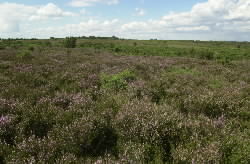 Background
Background
The centre of Cornwall, to the north of St Austell, is dominated by the China Clay mining area. Large white tips of spoil are typical of this area and have been for many years. Many of the original conical tips have been re-landscaped and many now have re-colonised with heathland vegetation. Much of the heathland area is SSSI (Sites of Special Scientific Interest) status. Some woodland, in the form of shelter / landscaping belts, was planted some 30 years ago.
The landscaping scheme
The China Clay company, IMERYS are the owners of most of the China Clay area. With support from DEFRA, English Nature, Forestry Commission, and the district and county councils, IMERYS have now taken on a major landscaping scheme on their land to:
- Recreate areas of lowland heath
- Restore other heathland areas
- Carry out an extensive tree planting project.
Funding for the scheme has been provided by the above organisations, with a further £2.4M from the Heritage Lottery Fund.
Project aims
- Plant a total of 339 ha of new native woodland on several of the old tips over a three-year period
- Restore 325 ha of existing woodland to native woodland
- Convert 116 ha of old shelter belts to native woodland
- Remove invasive shrub species such as Rhododendron, Japanese knotweed, gorse and bracken
- Provide 11.9 km of new and improved access routes will be provided for walkers, cyclists and horse riders.
The whole project is expected to contribute 12% of the UK BAP target.
